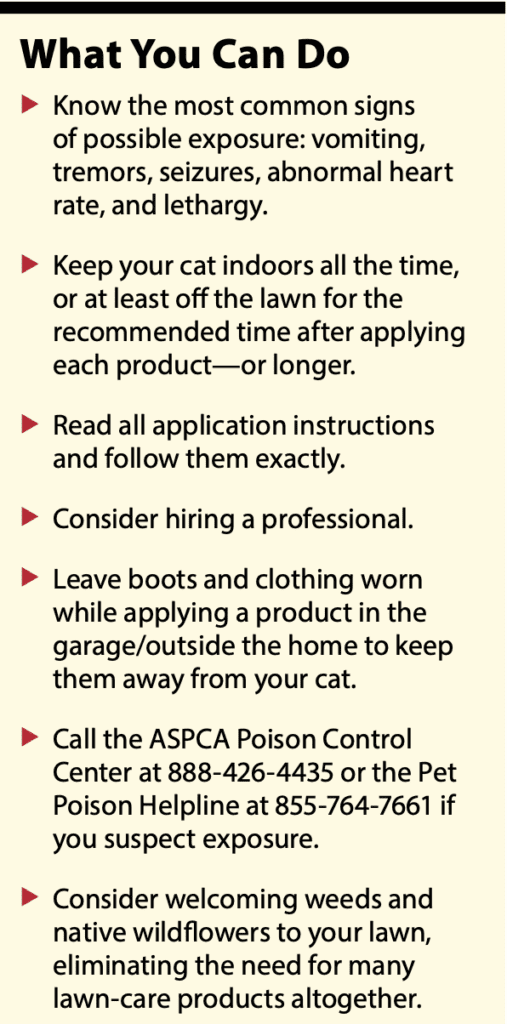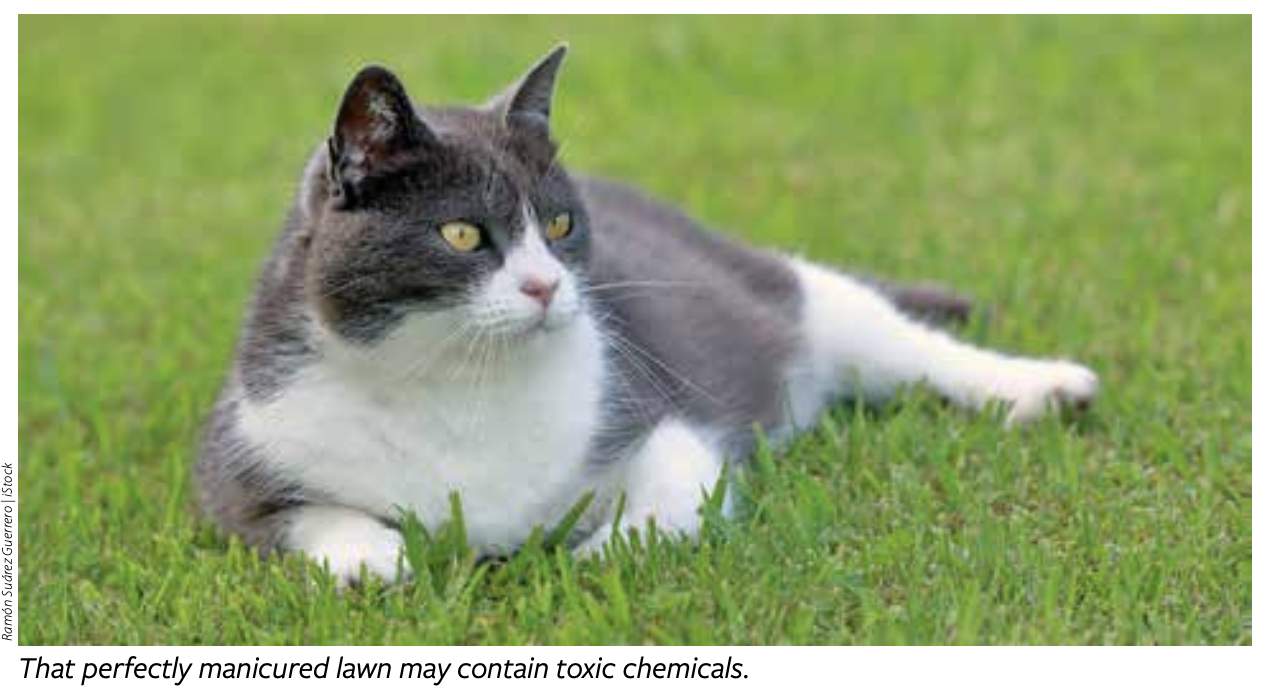A pristine green lawn is lovely to look at, but difficult to maintain. Many lawn afficionados use a variety of products to combat both weeds and insects that feed on grass. These pesticides, insecticides, fertilizers, and herbicides can all potentially be toxic to your cat.
How Cats Get Exposed
It makes sense that cats who go outside are exposed to lawn-care products. They explore both their own yards and other yards, and their short stature brings them into direct contact with anything on the grass. Cats also sniff as they patrol the area and may inhale products.
But indoor cats are not immune to these risks. We can track lawn chemicals into the house on our shoes and clothing, exposing our cats when they brush against us, sniff our clothes, or walk through any spills or contaminated footprints.
If a cat walks through an area recently sprayed with a lawn-care chemical or a puddle of spilled product, they can then ingest the product when grooming.
Signs of Toxicity
The exact signs that your cat has been poisoned by a lawn-care product will vary depending upon the exact product she was exposed to and how much of it she ingested, inhaled, or absorbed (see sidebar for potential symptoms).
If you suspect your cat is experiencing toxicity from a lawn-care product or know that she has been exposed, call a pet-poison hotline to get the most recent information on risks, signs, and treatment.
The severity of harmful effects will often vary depending on the “dose” to which your cat was exposed. Small exposures may have no obvious effects at first, but chronic exposure can build up over time.
We know this because studies have, for example, found metabolites of glyphosate and a variety of pesticides in cat urine, and a study done in Italy found polychlorinated biphenyls and DDT in cats’ fatty tissue.
At this point, we do not have exact data on how much of which lawn-care products can lead to toxicity for cats, or the differences in risks between acute exposure and chronic low-grade exposure. Studies in humans and dogs have suggested a connection between cancer and some lawn-care products. To be safe, minimize your cat’s exposure to these products as much as possible.
 Safe Application
Safe Application
Many lawn-care products have the potential to cause harm if used incorrectly. Many states require commercial farmers and lawn-care professionals to take safety courses and pass a licensing exam to apply pesticides, herbicides, and other products. Individual homeowners usually are not required to go through the processes even though they have access to the exact same products.
One easy way to increase the safety of your lawn care is to hire a professional. Lawn-care professionals are familiar with the products they are using and have all of the personal protective equipment needed to apply the chemicals safely.
If you want to handle your lawn care yourself, protect yourself, your family, your pets, and wildlife by reading all product instructions and following safety guidelines. Take the time to calculate the size of your lawn accurately, wear protective gear, and take off any exposed clothing before you go back in your house.
Product labels are a good place to start, but for the full story you will need to look up each product’s Safety Data Sheet (SDS).
For our indoor-outdoor cats, the most important piece of information is how long to keep your cat off the lawn after applying a product. Most products take one to two days to absorb into the ground or be washed off.
Note: Organic and “pet friendly” products can still be harmful to your cat if eaten. These products often still have a drying time during which you will need to keep your cat off the lawn to prevent any accidental ingestion.




